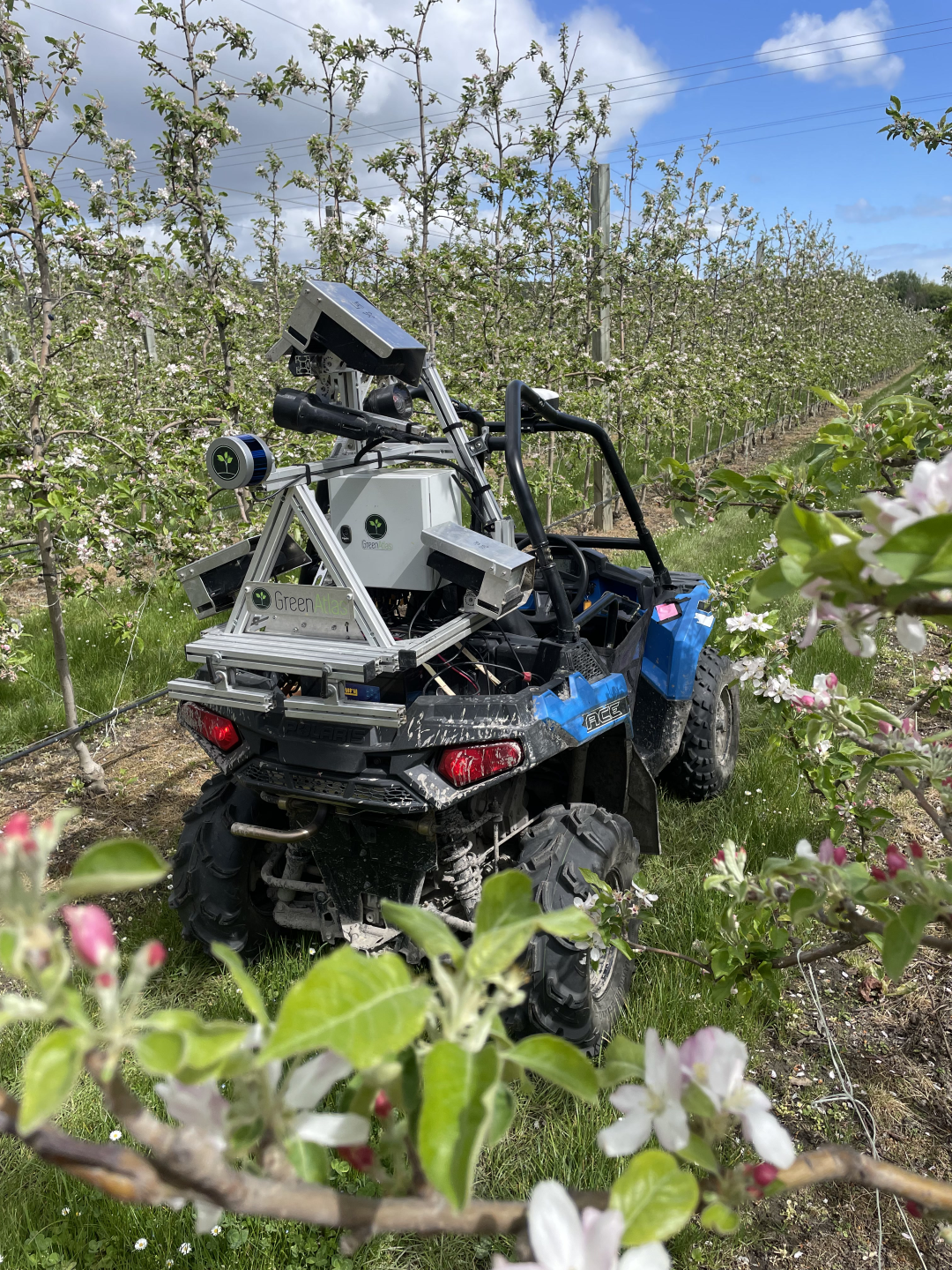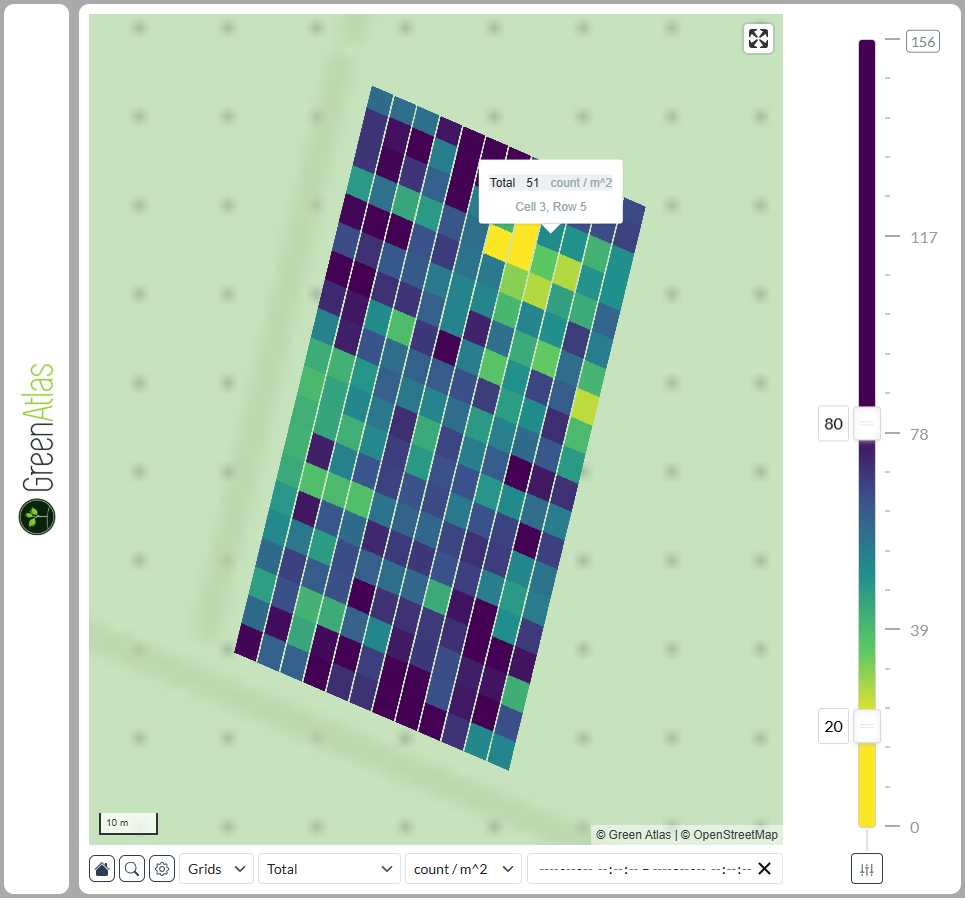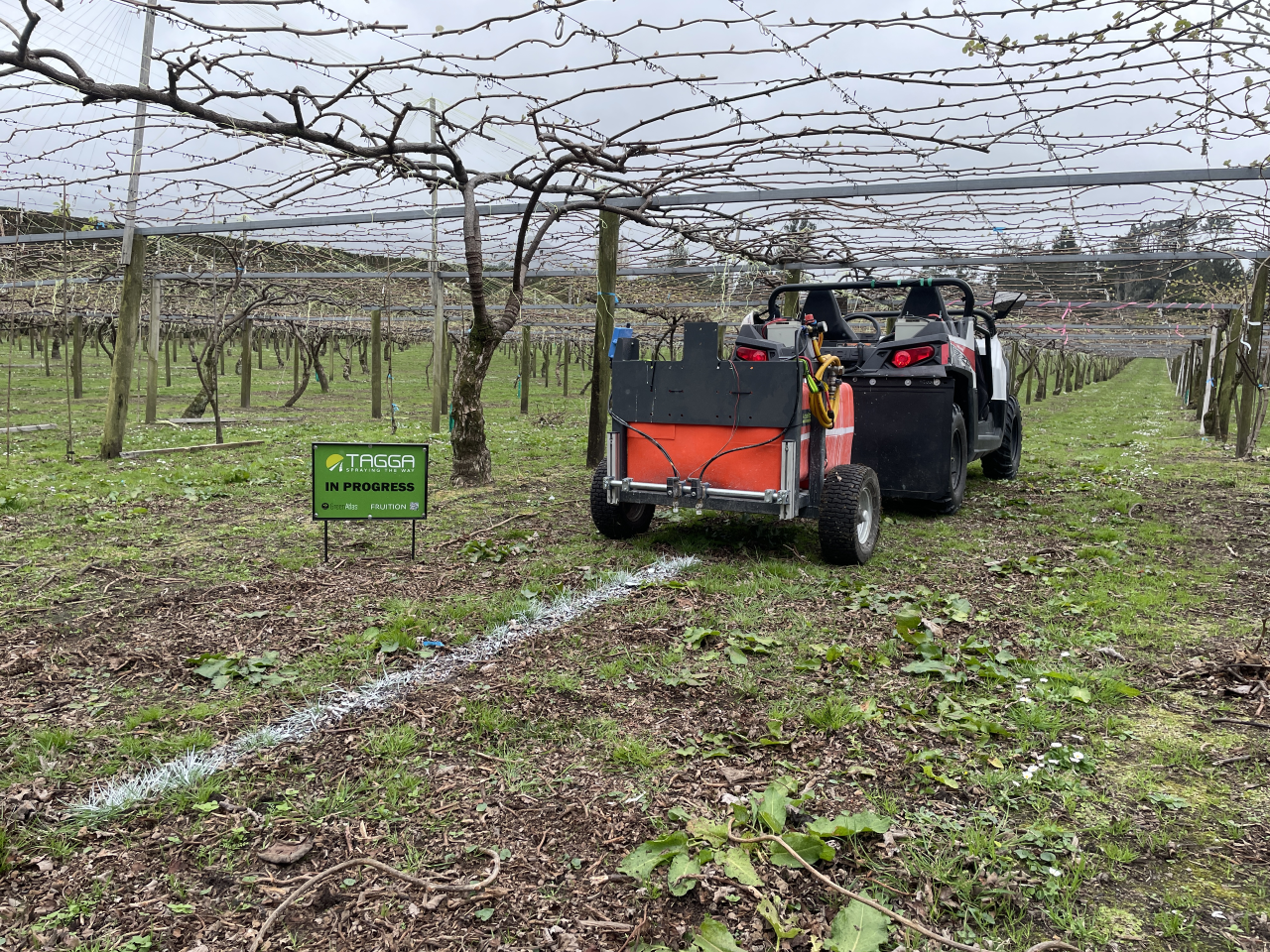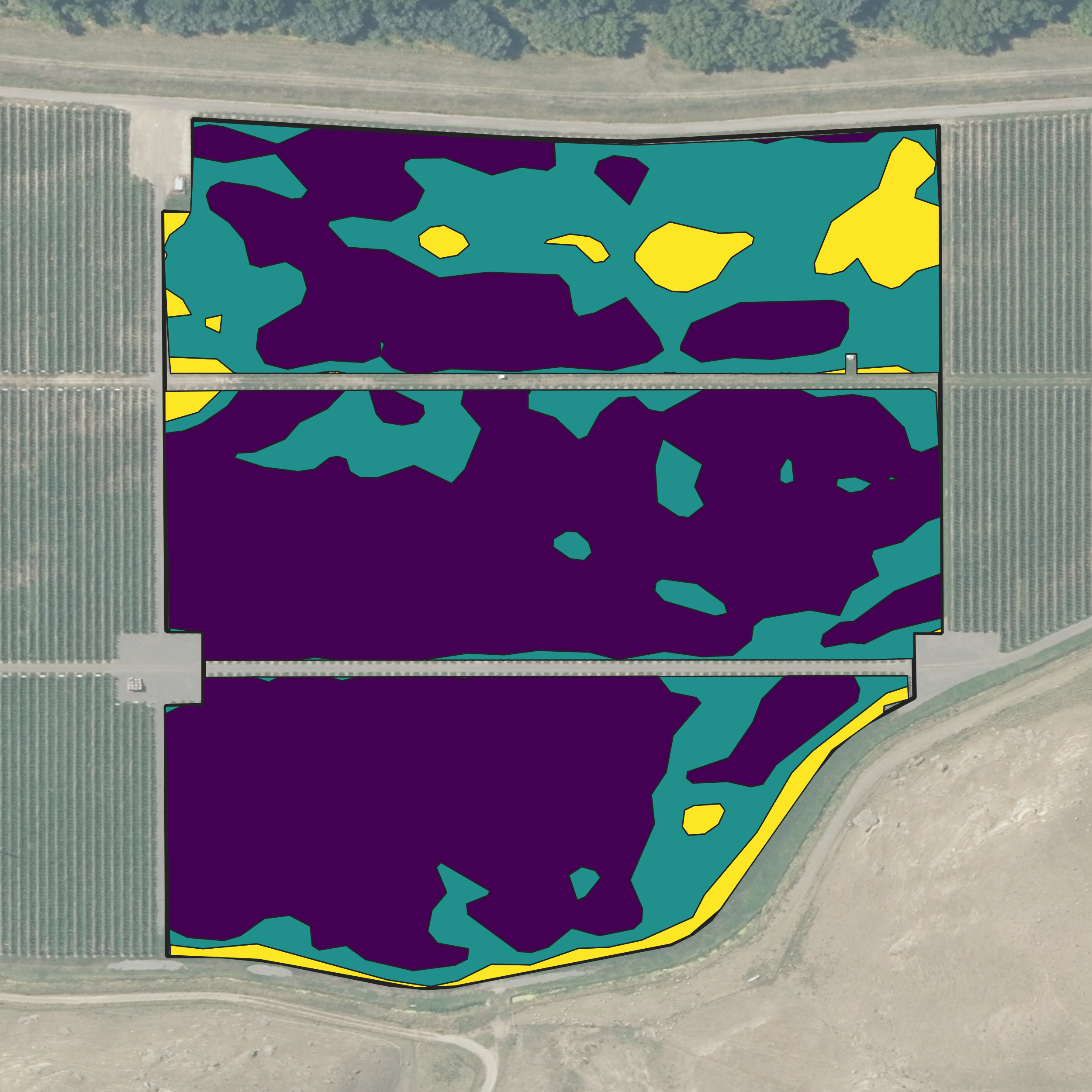Precision Horticulture
Our Precision Horticulture services are designed to help growers achieve their optimum crop load sooner, more easily, and at lower cost.

Green Atlas Scanning
The Green Atlas Cartographer accurately detects and efficiently maps the density of buds, flowers and fruit in apple, kiwifruit and other fruit crops. LiDAR simultaneously maps leaf area, height and canopy density.
Our crop scanning results are delivered as detailed orchard heatmaps and basic statistics to help you understand the variation in your block. We also generate geo-referenced orchard maps which can be used on a phone or tablet to navigate to areas of interest in the scan.
Bud scans quantify fruiting sites which indicates whether winter pruning has been effective. Confirming correct bud numbers in winter helps to prevent unnecessary thinning costs later in the season.
Flower and fruitlet scans help you make the best crop management decisions – identifying problem areas, ranking job priority and enabling you to develop thinning strategies to achieve your targets with uniformity across the block.
These flower and fruitlet scans also provide useful information for canopy management, helping to deliver good fruit colour and quality. These canopy maps also can inform adjustments to spray volumes for more targeted and effective chemical use.
Fruit scans help you make any late adjustments to crop load and collect further canopy information which can inform vigour control in the following season. These scans also provide accurate fruit numbers and fruit size for crop estimates.
Our Green Atlas crop scanning services are available across Hawkes Bay, Bay of Plenty and Gisborne, and we are always open to opportunities to expand into other regions.
Click here to download our kiwifruit and apple scanning brochures.


Green Atlas Interactive Viewer
All crop scan results are made available through the Green Atlas Viewer on the Fruition Portal as well as in pdf form for easy printing and sharing. The Green Atlas Viewer was developed to allow you to interact fully with orchard maps, letting you find out what to know about each of your block.
Features include:
- Adjustable scales to highlight low and high cropping areas with precision
- Customisable colour schemes to match your visual preferences
- Full orchard overview with all blocks in a single, easy to compare view
- Zoom functionality to focus in specific areas of interest
- Hover to reveal each individual image and data point collected
Check the videos here to see more of the Green Atlas Viewer.
Tagga
Turning scan insights in to targeted action.
Tagga bridges the gap between crop scan results and efficient labour management. Scans measure crop variation in the orchard but the challenge is how to make that data more practically useful. Tagga does that.
Using your selected threshold, Tagga marks your orchard per tree or per bay, showing exactly where attention is needed. Instructions to staff are simple: Act where there’s a mark. Walk past where there isn’t.
This precision approach helps reduce over-thinning, improve crop consistency, and save on labour by focusing only on the areas that matter.
Click here to download the Tagga trial report from the 2024/25 season


Prescription Maps
Green Atlas scan data can be used to generate prescription maps for a range of variable rate applications. These include targeted spraying of plant growth regulators (PGRs) or other products to better meet the specific requirements of each tree. Additional applications may involve variable rate fertiliser, compost, or root pruning – each tailored to individual tree needs.
Cartographer data is captured with a high level of spatial accuracy allowing accurate and precise actions to be taken with ease. Scan data is transformed easily into different formats meaning whatever kit you use, our maps will slot straight in.
The true value of using prescription maps and variable rate technology lies in improving the quality of your crop and the uniformity of your orchard. Reducing wastage is simply an added benefit.
Crop Optimisation
Crop Optimisation aims to help you maximise orchard profitability by identifying the optimal combination of management inputs for your specific variety and orchard system.
Traditional crop load targets expressed as fruit per tree don’t account for differences in tree size meaning each block requires a different target, complicating management. Our approach, Crop Optimisation (CropOpt), focuses on a tree’s capacity to carry crop, allowing us to think in terms of effective crop load.
Our latest work uses Tree Row Volume (TRV) – measured in cubic metres of canopy per tree – to assess fruiting capacity. By shifting the denominator in the crop load equation to fruit per m³, we create a more robust and scalable metric. This allows optimisation across varying tree sizes and orchard systems.
We take this further by analysing the combination of inputs required to achieve a given crop load and evaluating the resulting fruit value. This enables us to determine true profitability, not just yield. In many cases, the management required to produce the highest fruit value may be more costly and not deliver the best overall return.
CropOpt helps you find the sweet spot – where input decisions align with fruit value to deliver the most profitable outcome.



